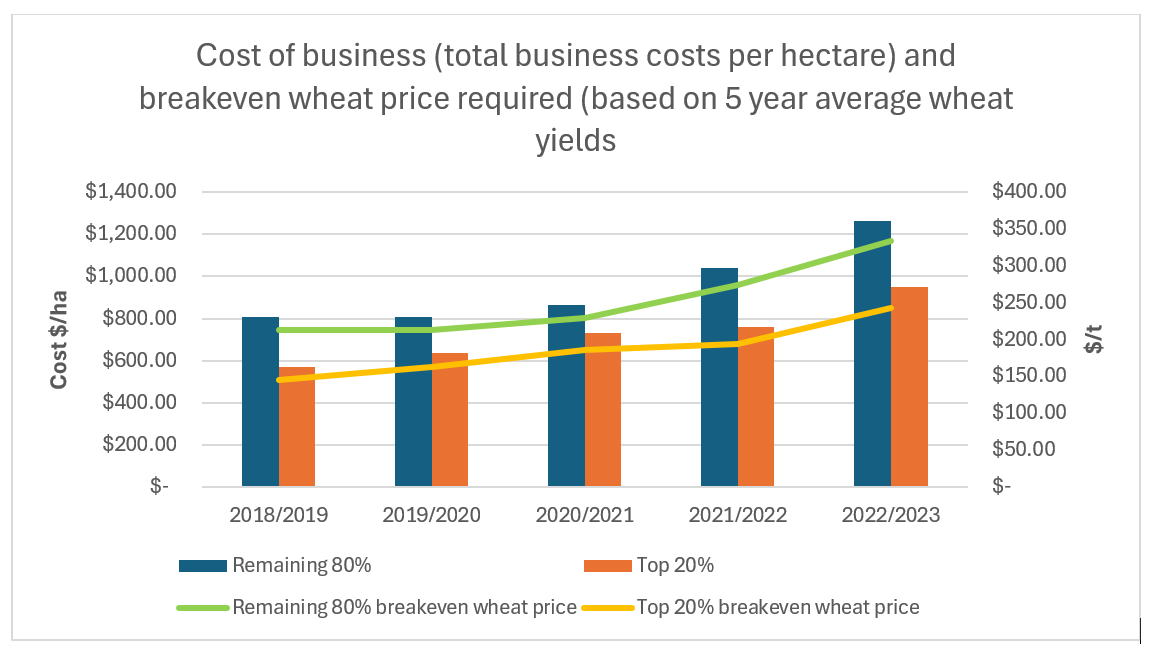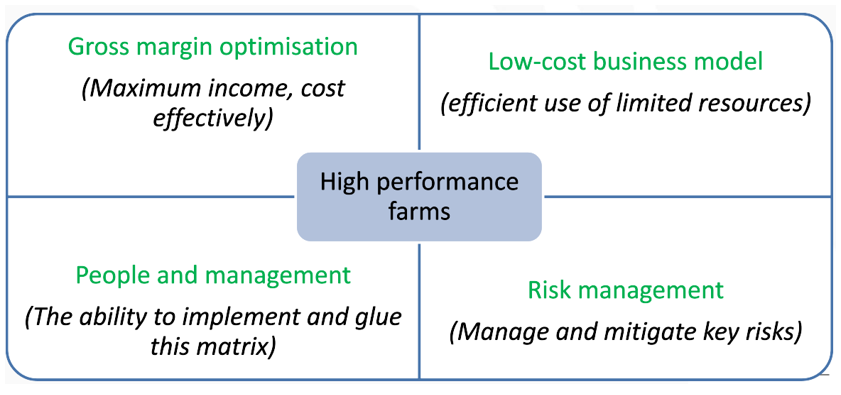With the cost of farming per hectare reaching an all-time high, it is more important than ever to understand the intricacies of successful farm management.
Pinion Advisory's recent work for the Grains Research & Development Corporation's Farm Business Updates provides insight into the changing world of farm performance. We'll share some highlights of the strategies implemented by Australia's top 20% grain businesses to maintain profitability amid rising costs, market volatility, and variable seasons and how these strategies can be applicable to businesses of all kinds.

The blueprint of success
Pinion Advisory’s research, initially conducted in 2015 (GRDC project RDP00013) and revisited recently, identifies four primary drivers of profitability that have stood the test of time:
- Gross margin optimisation: Top businesses generate strong levels of income efficiently, maximising their margins.
- Low-cost business model: Strategic investments in machinery and labour, coupled with strong decision-making regarding scaling of operations through buying or leasing, keeps costs in check.
- Skilled management and teamwork: The importance of robust management skills and a competent team cannot be overstated in achieving top-tier performance. This really is the glue in high performance businesses.
- Effective risk management: Proactively managing both production and business risks ensures a resilient operation.

These drivers highlight that the success of the top 20% isn’t necessarily about larger scales or specific crop types but rather about superior management and decision-making capabilities. In fact, the difference in scale between the top 20% and the remaining 80% was just 50ha, indicating that scale alone is not a primary driver of higher profitability.
The top 20% have been able to maximise profit through higher levels of income generation driven by 10% stronger water use efficiency, which is reflected in higher income per ha per mm. They also demonstrate stronger cost accountability and efficiency in their input expenditure, labour, and machinery. The top 20% have been able to leverage stronger income generation whilst being 30% more cost-effective with fertiliser and chemicals. This is despite legume areas being almost identical, indicating a robust approach to cost-effective decision-making.
Machinery is certainly an item that has shot up in value over this period and is a pain point for all. Perhaps surprisingly, there was limited difference in machinery capital per hectare. However, when we consider total plant, machinery and labour costs, the top 20% invested less per hectare in these costs than the remaining 80%. Fuel costs and repairs and maintenance are marginal factors in this, but the top 20% are also managing more area per FTE, pointing towards a system that supports greater labour and machinery use efficiency. This, combined with stronger income generation, is helping to offset the increased cost of production.
Despite the cost of business biting for all, the top 20% have continued to demonstrate that strong implementation of the four key primary profit drivers and seeking a low cost of production is helping to minimise the risk of market pressure.
What opportunities are there to create greater performance and resilience?
The challenge is laid bare. Farming has never been more expensive per hectare, and maintaining a margin is crucial. Decision-making in the past five years has been somewhat masked when we consider seasonal outcomes and pricing.
There is a need to ensure we optimise decisions, implement strongly and look at your business for what it is. What creates the highest and best margin for my own business? Are my lease blocks performing? What does my machinery replacement plan look like? Do I know my own KPI’s? These are all questions we should be looking at to help create a strategy that works for your business. We also want to think about ‘magic versus management’, a great quote from Ted Carter (Former University of Adelaide). Magic are things like varieties which in many cases give us marginal gains but it is not what drives the difference. Management is the glue.
Key take homes to consider
- By knowing and understanding what’s possible, it provides a great opportunity to address items in your own business to increase business performance, profit and clarity of direction.
- With cost structures increasing, focusing on maintain low cost of production is vital. This requires optimising decision making and focusing on the fundamentals of what creates real value in the business. Timeliness, organisation and strategic spending are key.
- Poor financial performance and a lack of clarity only increases stress and irrational decision making. Having a clear plan of action driven by robust data creates actionable steps which alleviates the stress of ‘gut feel’.
For more information on how Pinion Advisory can help. Contact James Hillcoat, Farm Business Management Consultant today.
1300 746 866
jhillcoat@pinionadvisory.com